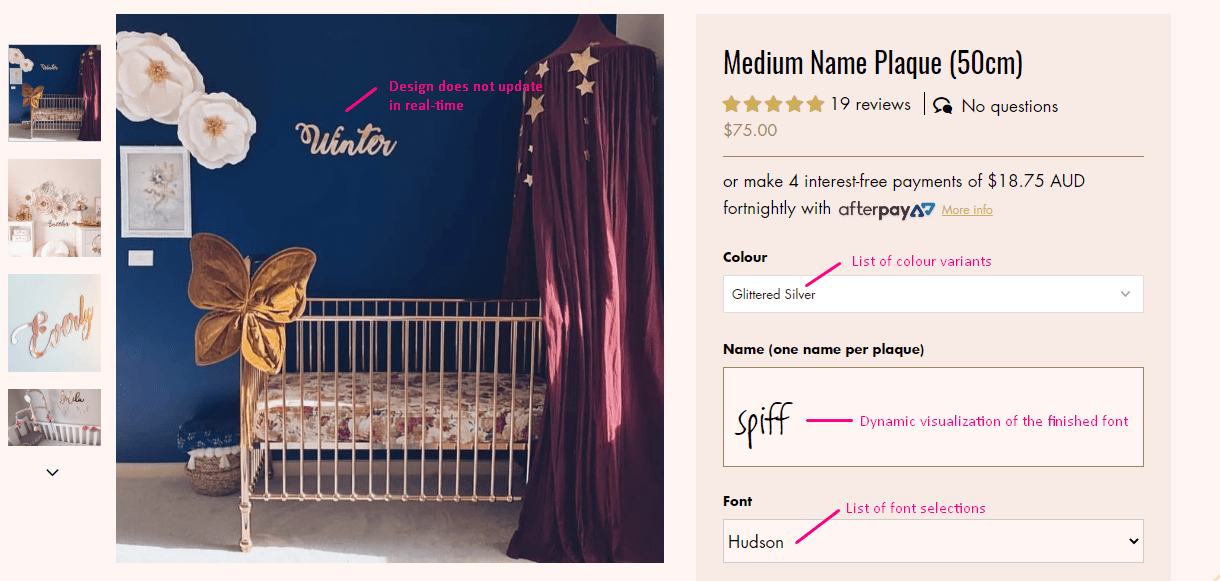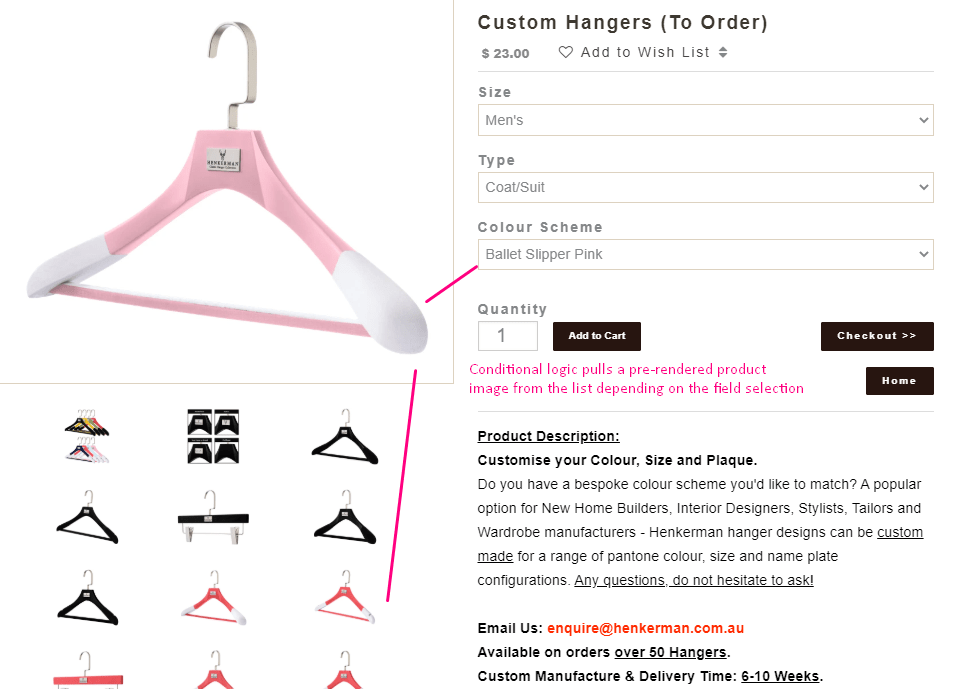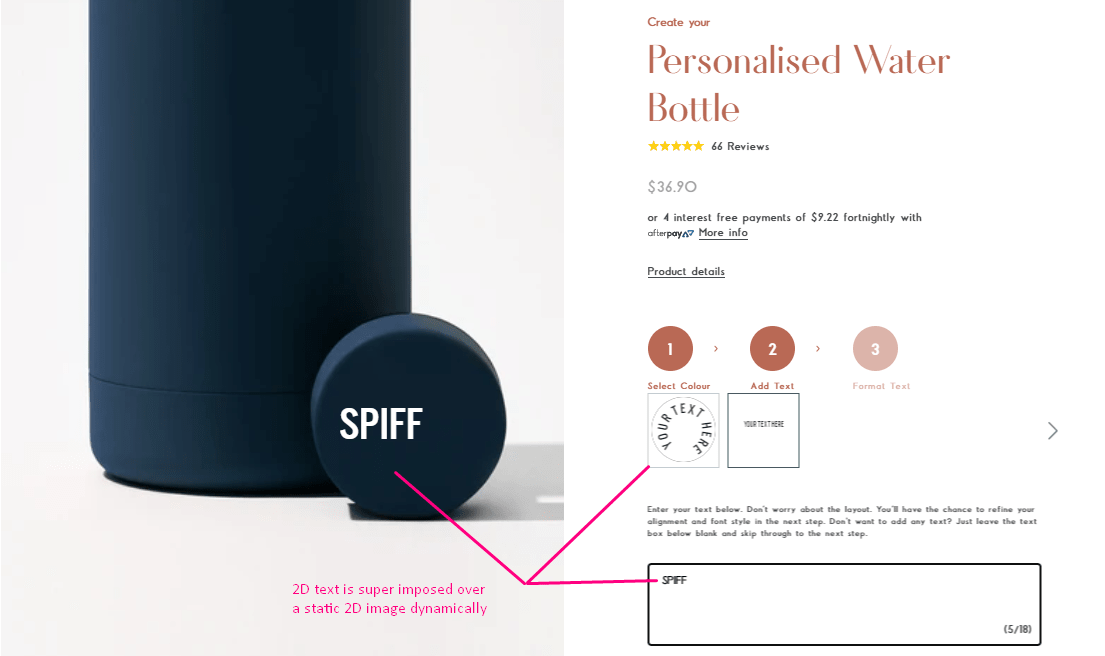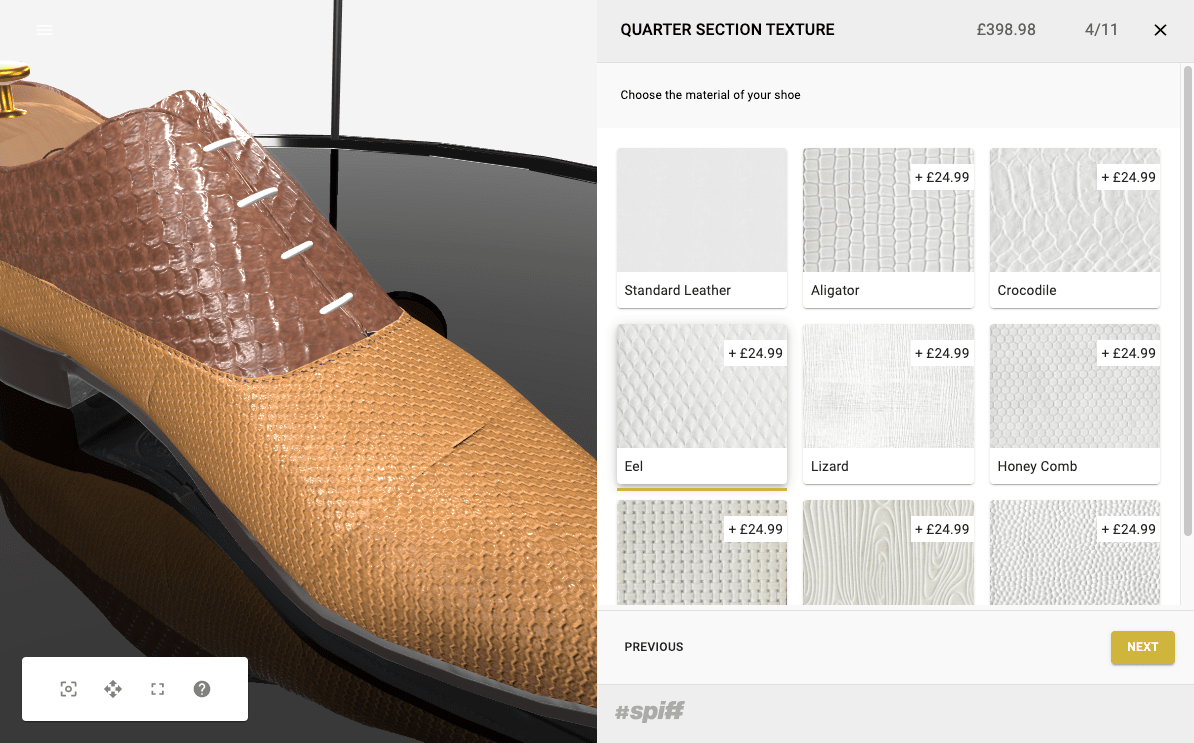Product Customization Apps for Magento
Product customizers are software applications for Magento which allow for customization
What is a Product Customizer?
Product customizers are software applications that enable you to add product customization abilities to products on an eCommerce website.
They can also be called Custom Product Builders, Custom Product Options, Product Configurators, or Custom Product Designers. All these apps on the market vary considerably in terms of their functionality and power.
At the low end of the market, these apps will extend the default product page’s functionality and allow you to add additional drop-down product option fields to your product page. Other apps will be more advanced, enabling image overlays, dynamic visual configuration, and even 3D support.
While most eCommerce platforms will support custom code changes to the core theme files, third-party apps on Magento can be a better option to add product customization ability to the website instead.
Four Categories of Product Customizers
If we had to break it down, there are four different types of product customizer apps available on Magento which you need to be aware of:
Product Options App
Modified Product Options App
2D Visual Customizers
3D Visual Customizers
1 – Product Options Apps
Adding a sequence of form field selections or ‘product variations’ to a base product are called Custom Product Options Apps.
Typically, they will extend the default product settings by adding extra custom fields on the product page.
The customer will then be able to fill in these fields before a modified product is added to the cart.
The downside with this decision is that the product page will start to look clunky. Conditional logic (if this, then that) functionality will generally not be available either.
As a result, the customer may get overwhelmed by a whole series of fields running down the page. Typically these apps don’t support visualization, so the customer won’t be able to see the final product prior to checkout. Purchase risk perceptions will be higher.
These apps rarely integrate downstream into inventory, design, ordering, and fulfillment processes. Typically a lot of manual, back and forth communication between all the parties is required which absorbs business resources, ultimately making this an unprofitable endeavor.


2 – Modified Product Options Apps
A lot of merchants will experiment with product options apps before realizing it doesn’t support a critical function.
This either warrants an upgrade to more advanced customizers or some will do deep into the rabbit hole that is custom-coded website development. Such work can be costly, messy, time-consuming and a nightmare for maintenance.
Pictured here is an example of a merchant who has gone down the custom modification route which involved taking pictures of every single product selection combination – there were hundreds. This is not dynamic product visualization, but a workaround.
Product Options Apps are not true customization apps. They are simply a more advanced version of a detailed product variant.
3 – 2D Product Customizers
2D product customization is one of the most most popular options. They allow merchants to represent changes to the product image visually in 2D by layering images on top of the default product image. See this example, where if the customer enters their name into a text field, this text is overlayed on top of the background product image.
These apps can work well with simple, flat products like T-shirts, posters, books, monogramming of wallets, etc.
But, if the product’s shape is complex, unfamiliar, high cost, or tactile, this solution will not be suitable. The overlays can look distorted and unappealing, giving off the wrong vibe to the customer.
Typical issues involve the text not wrapping around the sides of curved surfaces well or insufficient blending of the layers which gives it an unrealistic ‘pasted’ look and feel.


4 – 3D Product Customizers
The most advanced product customization apps are 3D customizers which allow people to modify the product in a live 3D environment.
This technology allows customers to see exactly what the product will look like before purchase and this significantly reduces any perceptions of risk.
This software is sometimes called “3D product configurators” or “visual configuration software” also.
More advanced 3D customizers (like ours) will allow you to add a scene or context in the background around the 3D product model.
Some will allow you to animate parts of the customization process so the product comes to life as you step through the customization sequence.
Again, 3D customization apps are not all created equal. The way the different layers of customization blend into the base 3D model varies considerably and there may be major bandwith lag issues when loading in a web browser.
Don’t Forget Downstream
One of the biggest barriers isn’t in the front-end customization part of operations but in the ordering, manufacturing, and fulfillment side of the equation.
This process varies considerably from one merchant to the next. Each has their own processes, technology and services providers which they. So there needs to be a lot of flexibility in the back-end of the customization software you choose if you want to automate and scale this offering.
Some retailers will modify the physical product themselves locally. Others will send a standardized product to another firm that makes the modifications. Others will outsource the entire manufacturing of the personalized product completely.
Most fulfillment systems do not cater to procedures which fall outside standard processes. Customization can quickly create a lot of complexity in the fulfillment process.
Typically many of the business systems and other supplier vendors in the chain may not be familiar with anything that falls outside the norm of standardized product fulfillment.
We’ve ensured our app integrates seamlessly into downstream production and product fulfillment processes. This might involve actions such as sending data to 3D printers, 2D printers, labeling machines, integration into ERP/WMS systems, and more.
These integrations allow for true, hands-off mass personalization at scale.
